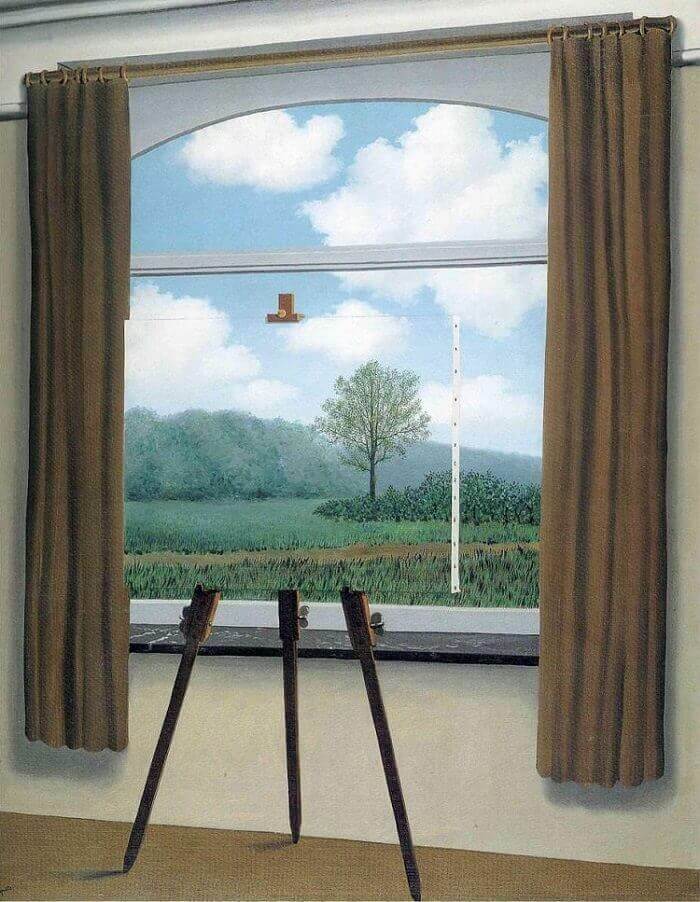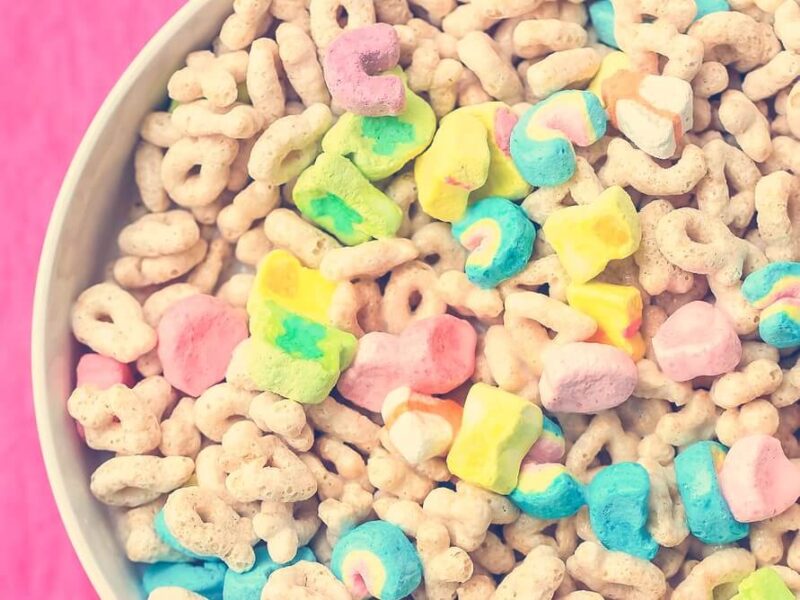“I don’t remember much about the story. It was about a ten-year-old Bombay boy who one day happens upon a rainbow’s beginning, a place as elusive as any pot-of-gold end zone, and as rich in promises.”
– Salman Rushdie, Out of Kansas

One of René Magritte’s most tantalizing, terrifying paintings is of an easel inside a room, in front of a window. On the easel, an unframed painting seems to depict exactly the bit of landscape hidden behind it:
Grass; green. Path. Sky; blue. Billowy clouds. A slender tree to the right, in front, against a hilly backdrop. Everything around the tree—clouds, hills, and path and blue—seems to flow right off the canvas, out the window, perfectly contiguous with the view.
One assumes, therefore, that behind the image of the tree in the picture, too, there is another, identical. The viewer cannot see it, but believes in the tree. There is, in fact, no proof,
of anything in this scene.
This painting is an image, a composition of blobs of green, white, blue, brown paint on canvas; a scene Magritte invented. There is no difference between the tree on the easel and the one that could be behind it; he made us believe in both. We live and die by such perceptions.
Magritte called this La Condition Humaine. It has other names: belief, hope, faith,
in love, luck, happiness, ultimate good; horseshoes, blue moons, shooting stars; philosophies, charters, dogmas; four-leaved clovers, constitutions, religious texts, and poetry… as many names as views and people and windows and trees, and as many paths through life as pots of gold at the end of rainbows.
In fact, there is no “end” of a rainbow; they occur in complete circles, a phenomenon that can only be seen from plane windows. From earth, the horizon gets in the way. Also, because the light bounces off different raindrops, which are constantly in motion, no two people, at any time, see the same rainbow.
There is, therefore, no guarantee of a pot of gold, just as the chance of the mutation that creates a four-leaved clover is one in five thousand. Just as a blue moon appears only if the dust and smoke particles in the air are slightly wider than 900 nanometers. And most shooting stars glow for less than a second.
Still, they happen. We’ve seen them.
Meteor showers, skyfalls of stars. And four-leaved clovers. And moons and loves and lucky breaks and moments of sheer happiness. Not promised, but possible, and isn’t it that possibility that makes everything beautiful? The beginning, not the end of rainbows.
Rainbows, “broad, as wide as the sidewalk … like a grand staircase.” And grass; green. Sky; blue. Clouds; billowy. Maybe there is a pot of gold, a tree. Maybe, it doesn’t matter, really.
